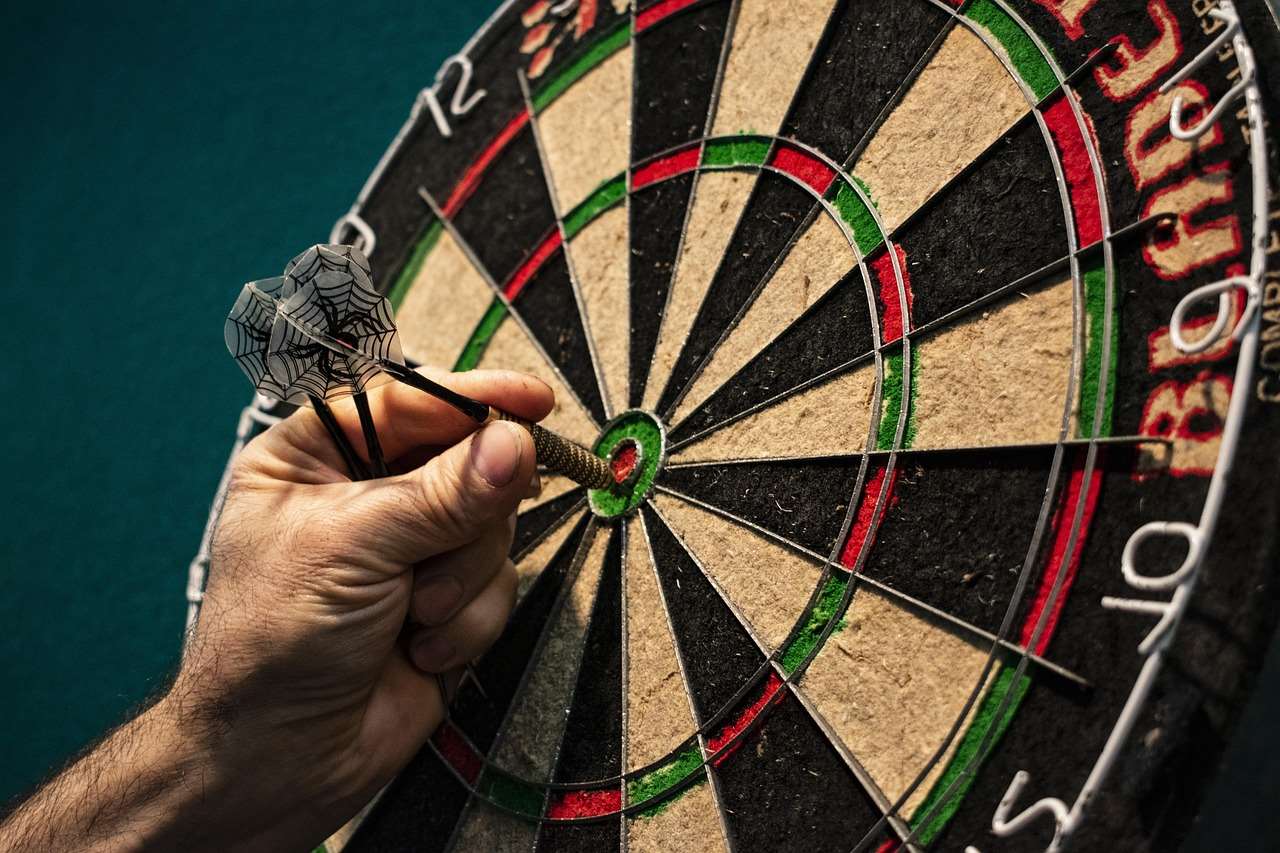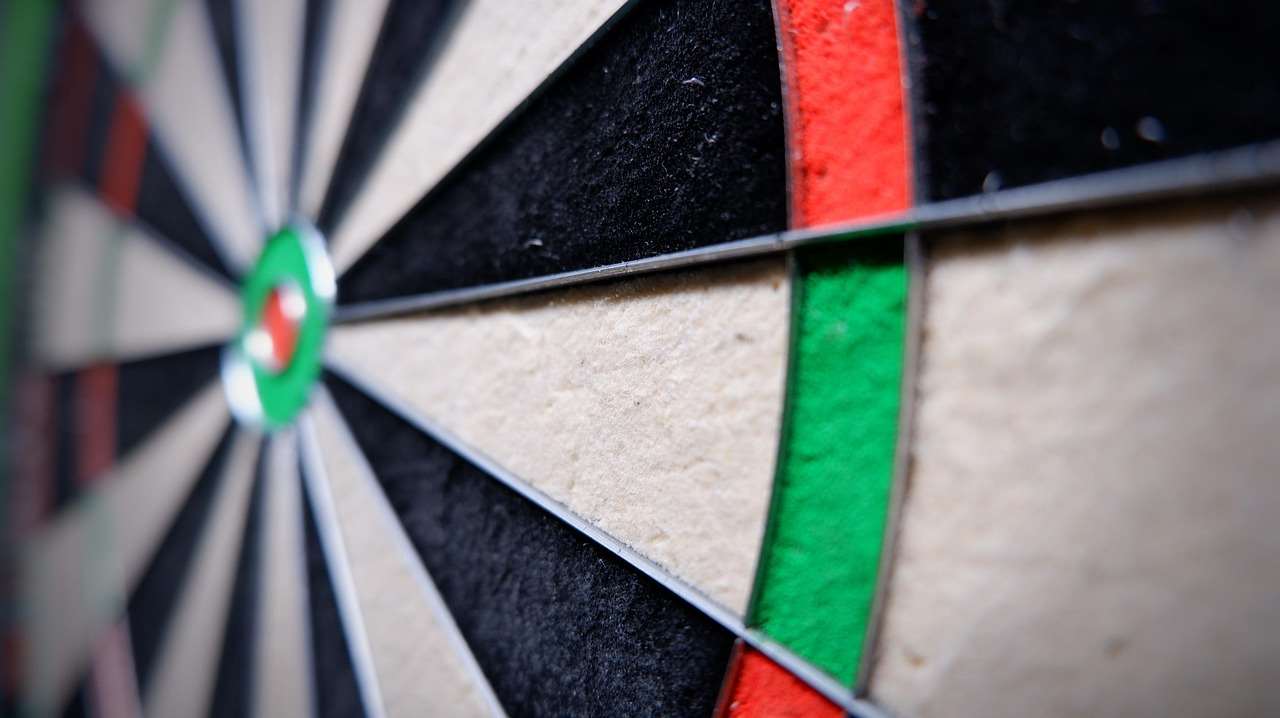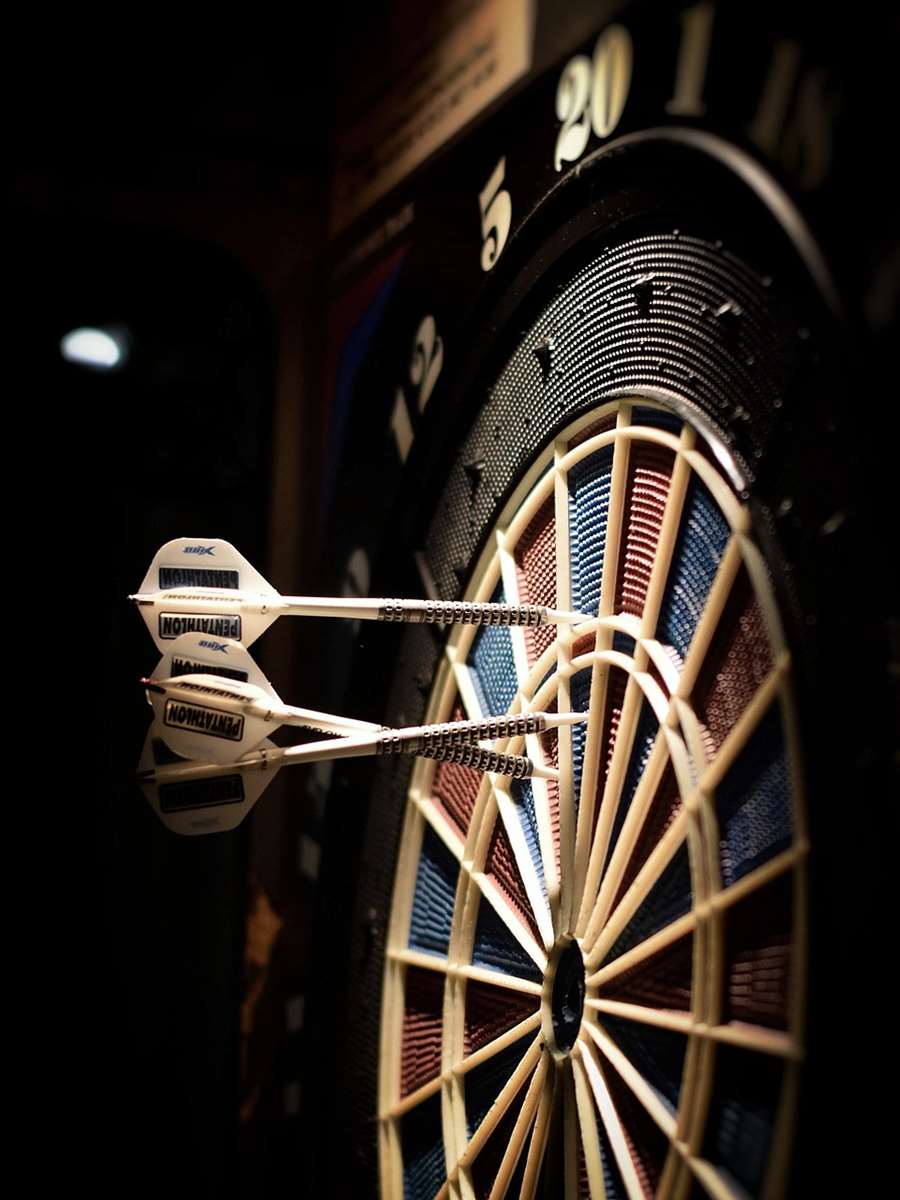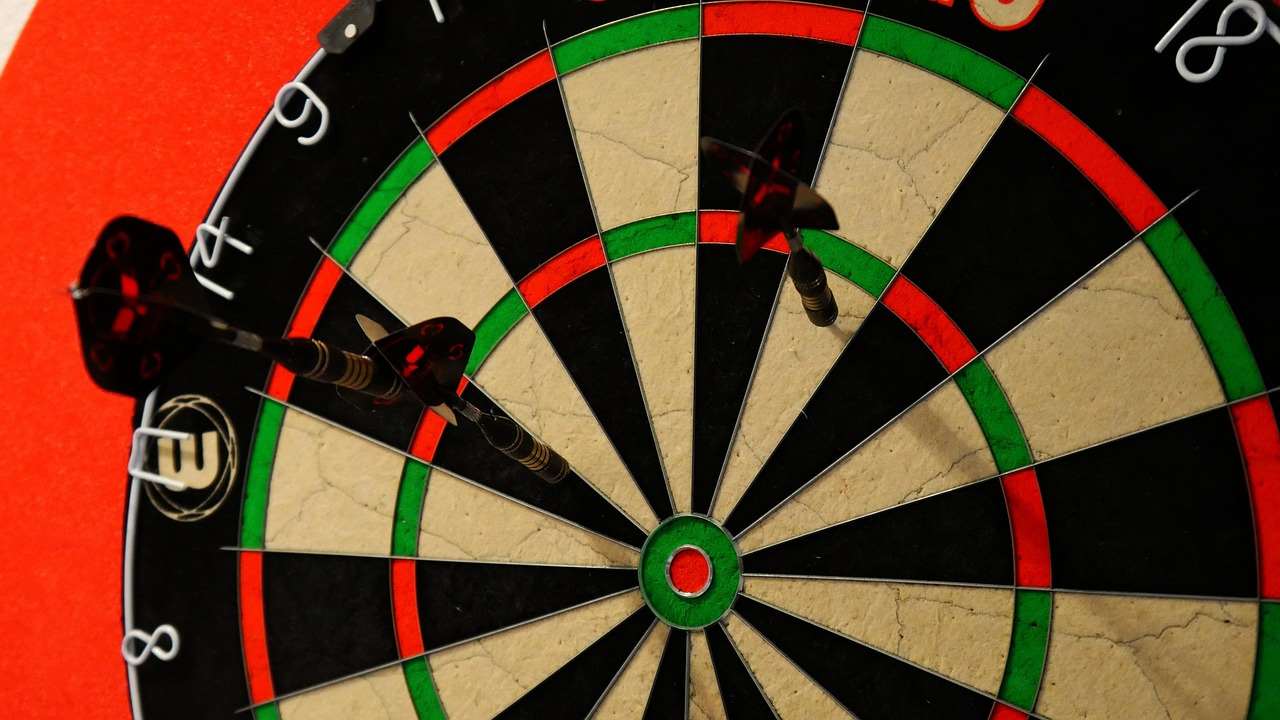Measuring oche distance correctly is fundamental for fair and accurate dart games; it ensures consistency and prevents disputes. This article provides a step-by-step guide to accurately measuring the oche distance, covering equipment, techniques, and common errors to avoid, so you can set up your dartboard like a pro.
⚠️ Still Using Pen & Paper (or a Chalkboard)?! ⚠️
Step into the future! The Dart Counter App handles all the scoring, suggests checkouts, and tracks your stats automatically. It's easier than you think!
Try the Smart Dart Counter App FREE!Ready for an upgrade? Click above!
Why Is Measuring Oche Distance Correctly So Important?
The oche, also known as the throw line or toe line, marks the spot from which a dart player must throw. Accuracy is paramount in darts, and even slight variations in the oche distance can significantly impact a player’s game. An incorrect distance can throw off a player’s stance, aiming, and overall rhythm. Therefore, measuring oche distance correctly is not just a matter of following the rules; it’s about maintaining the integrity and enjoyment of the sport. Setting up your dartboard correctly involves choosing the best dart equipment and installing everything to perfection.
Furthermore, in competitive settings, adherence to standardized measurements is strictly enforced. Using an incorrect distance could lead to disqualification or unfair advantage. Ensuring a consistent and accurate oche distance levels the playing field, allowing players to compete on equal terms. Ignoring this can easily ruin even the best budget darts for beginners.

Essential Tools for Measuring Oche Distance Correctly
Before you can begin measuring oche distance correctly, you’ll need the right tools. Having these readily available will make the process much smoother and more accurate:
- Measuring Tape: A retractable measuring tape is essential. Choose one that is at least 10 feet long (approximately 3 meters) to ensure you can easily measure the full distance. Look for a tape measure with clear, easy-to-read markings.
- Level: A level is crucial for ensuring that your dartboard is hung straight. This affects the perceived distance to the oche and contributes to a consistent playing experience.
- Plumb Bob or Laser Level: A plumb bob (a weight suspended from a string) or a laser level will help you ensure the measuring tape is perfectly vertical when taking the measurement from the bullseye to the floor.
- Pencil or Marker: You’ll need a pencil or marker to mark the oche line on the floor.
Alternative Measurement Tools
While the tools listed above are ideal, you can improvise if necessary. For example, you can use a long piece of string instead of a measuring tape, but be sure to stretch it taut to avoid inaccuracies. Similarly, a smartphone app can sometimes substitute for a level, although dedicated tools are generally more reliable.
Step-by-Step Guide: Accurately Measuring the Oche Distance
Follow these steps to guarantee that you are measuring oche distance correctly:
- Mount the Dartboard: Ensure the dartboard is properly mounted so that the bullseye is exactly 5 feet 8 inches (1.73 meters) from the floor. Use a level to confirm that the dartboard is perfectly vertical.
- Mark the Bullseye Position on the Floor: Use a plumb bob or laser level to project a vertical line from the center of the bullseye to the floor. Mark this spot on the floor clearly.
- Measure Horizontally: From the marked spot on the floor directly beneath the bullseye, measure out horizontally 7 feet 9 1/4 inches (2.37 meters) along the floor. This is the official oche distance.
- Mark the Oche Line: Draw a clear, straight line at the 7 feet 9 1/4 inches mark. This is your oche line. Some players prefer to use a raised oche (a piece of wood or metal) instead of just a line painted on the floor.
- Double-Check: Always double-check your measurement to ensure accuracy. Even a small error can affect gameplay.
Remember that the measurement is taken from the face of the dartboard, not the wall behind it. Also, ensure your measuring tape is taut and straight for an accurate reading. Investing In Premium Dart Equipment can also enhance your overall experience, but correct setup is key regardless.

Common Mistakes to Avoid When Measuring Oche Distance
Even with the best intentions, it’s easy to make mistakes when measuring oche distance correctly. Here are some common pitfalls to avoid:
- Inaccurate Dartboard Height: If the dartboard is not mounted at the correct height (5 feet 8 inches to the bullseye), the oche distance will be incorrect, even if measured perfectly horizontally.
- Slanted Dartboard: A dartboard that is not perfectly vertical can distort the perceived distance to the oche. Always use a level to ensure the board is straight.
- Loose Measuring Tape: A loose or sagging measuring tape will provide an inaccurate reading. Keep the tape taut and straight when measuring.
- Incorrect Measurement Starting Point: The measurement should start from the point directly below the bullseye on the floor, not from the wall behind the dartboard.
- Rounding Errors: Be precise with your measurements. Rounding off to the nearest inch can introduce significant errors over time. Use fractions or decimals for greater accuracy.
How These Mistakes Affect Gameplay
These small errors can have a big impact on a player’s game. For instance, a dartboard that is slightly too high can cause a player to throw at a higher angle, altering their usual trajectory. Similarly, an oche that is too far away might force a player to lean forward more than usual, affecting their balance and accuracy. Recognizing and preventing these mistakes ensures a consistent and fair playing experience for everyone involved. Differences between Budget and Premium Darts can also influence gameplay but proper setup trumps all.

Advanced Tips for Perfect Oche Setup
Once you’ve mastered the basics of measuring oche distance correctly, consider these advanced tips for a truly professional setup:
- Use a Raised Oche: Instead of just marking a line on the floor, consider installing a raised oche. This provides a tactile reference point for players and helps to prevent accidental stepping over the line.
- Consistent Flooring: Ensure that the flooring around the oche is consistent and level. Uneven flooring can affect a player’s stance and balance.
- Lighting: Proper lighting is essential for a good dart setup. Make sure the dartboard is well-lit and that there are no shadows that could obscure the target.
- Player Preference: While the official oche distance is standardized, some players may prefer slight variations based on their individual throwing style and stature. Be willing to make small adjustments to accommodate player preferences, while still maintaining the integrity of the game.
Addressing Uneven Floors
If your floor is uneven, you may need to compensate for this when measuring. Use a level to determine the highest point on the floor and measure from this point to the bullseye. This will ensure that the dartboard is properly positioned relative to the floor, regardless of any irregularities. Finding Value in Budget Dart Sets is great, but the board setup has to be flawless.
Maintaining Your Oche Setup
Measuring oche distance correctly is just the first step. Maintaining your setup over time is equally important. Here’s how to keep your oche setup in top condition:
- Regular Checks: Periodically check the height of the dartboard and the distance to the oche. Over time, the dartboard may shift slightly, or the oche line may become worn.
- Oche Line Maintenance: If you’re using a painted oche line, repaint it as needed to keep it clearly visible. If you’re using a raised oche, make sure it is securely attached to the floor.
- Floor Maintenance: Keep the area around the oche clean and free of debris. This will prevent slips and falls and ensure a consistent playing surface.

Dealing with Wear and Tear
Dartboards and oches are subject to wear and tear over time. If your dartboard becomes excessively worn, replace it. Similarly, if your raised oche becomes damaged or unstable, repair or replace it promptly. A well-maintained setup enhances the playing experience and prolongs the life of your equipment. Considering what makes darts premium quality might make you lean towards a higher quality board.
The Official Oche Distance in Different Dart Games
While the standard oche distance is 7 feet 9 1/4 inches (2.37 meters), it’s worth noting that some variations exist in different dart games or leagues. Always consult the specific rules of the game or league you are participating in to ensure compliance. Most professional tournaments and leagues adhere strictly to the standard measurement, but some amateur or social leagues may have slightly different rules. Always verify before you play! Many people will ask: Are premium darts worth it? No matter what you use, make sure you follow the rules.
Understanding these nuances helps ensure fair play and prevents any misunderstandings or disputes. Being aware of these variations demonstrates a commitment to sportsmanship and respect for the rules of the game. You can find more insight into dart selection by viewing the Quality Comparison Budget Premium Darts review.

Conclusion
Measuring oche distance correctly is a critical aspect of setting up a dartboard for fair and accurate gameplay. By following the steps outlined in this guide, using the right tools, and avoiding common mistakes, you can ensure that your oche distance is perfect every time. Remember that consistency is key, and a properly measured oche not only enhances the playing experience but also demonstrates a commitment to the integrity of the sport. So, grab your measuring tape, level, and plumb bob, and get your dartboard setup just right!
Now that you know how to properly measure the oche distance, why not ensure all your dart equipment is up to par? Explore our site for reviews and buying guides to upgrade your dart sets and elevate your game today!
Hi, I’m Dieter, and I created Dartcounter (Dartcounterapp.com). My motivation wasn’t being a darts expert – quite the opposite! When I first started playing, I loved the game but found keeping accurate scores and tracking stats difficult and distracting.
I figured I couldn’t be the only one struggling with this. So, I decided to build a solution: an easy-to-use application that everyone, no matter their experience level, could use to manage scoring effortlessly.
My goal for Dartcounter was simple: let the app handle the numbers – the scoring, the averages, the stats, even checkout suggestions – so players could focus purely on their throw and enjoying the game. It began as a way to solve my own beginner’s problem, and I’m thrilled it has grown into a helpful tool for the wider darts community.